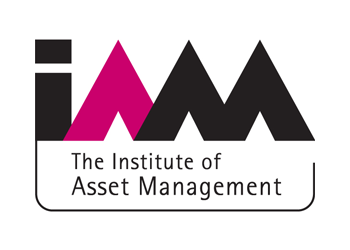 Image 1 of 2
Image 1 of 2

 Image 2 of 2
Image 2 of 2



The Principles of Asset Management
Prices Quoted Exclude VAT
Course Type | Maintenance and Asset Management
Certificate | IAM (Institute of Asset Management) Certificate
Duration of Course | 4 Days
Location | Solihull or Reading Training Centre
Note | The course fees cover the registration process and provide entry to sit the IAM certificate examination remotely, once within 12 months of the voucher issue date.
Prices Quoted Exclude VAT
Course Type | Maintenance and Asset Management
Certificate | IAM (Institute of Asset Management) Certificate
Duration of Course | 4 Days
Location | Solihull or Reading Training Centre
Note | The course fees cover the registration process and provide entry to sit the IAM certificate examination remotely, once within 12 months of the voucher issue date.
Prices Quoted Exclude VAT
Course Type | Maintenance and Asset Management
Certificate | IAM (Institute of Asset Management) Certificate
Duration of Course | 4 Days
Location | Solihull or Reading Training Centre
Note | The course fees cover the registration process and provide entry to sit the IAM certificate examination remotely, once within 12 months of the voucher issue date.
About The Principles of Asset Management

This 4-day course is delivered as a scheduled workshop or on-site. It discusses the core concepts and the practical applications in a highly interactive manner. This course is suitable for those with some experience of physical asset management; they may have some specific maintenance experience, but little knowledge of the wider context, such as business strategy, risk management, life cycle costing etc.
It is suitable for those with at least 3 years’ practical experience in the asset-intensive industry with knowledge of business strategy, risk management, life cycle costing etc. Public and private organisations invest vast sums of money in assets. These might be infrastructure, utilities, buildings and machinery in sectors such as oil, gas, chemical, utilities, engineering, transport and manufacturing. If you sweat your assets too much they may fail and incur expensive repair and loss of product/service costs. If your asset is underutilised, then capital is tied up unnecessarily. Asset management is not just about maintenance and keeping downtime to a minimum. It is about optimising the performance and minimising the cost of ownership throughout the life-cycle of the asset. MCP is one of the Institute of Asset Management’s Endorsed Training Providers. Our course will:
Help delegates understand the fundamental principles underpinning Asset Management
Illustrate Asset Management Policy & Strategy and show how it is developed
Help delegates understand asset life cycle management
Show the factors influencing an asset’s total life-cycle costs
Help delegates understand the information requirements related to the life cycle of an asset
Demonstrate the relationship between asset management and risk management
Illustrate the way Asset Management is assessed (BS ISO 55001 requirements

Is it right for me?
Delegates who need to understand the relationship between asset management and risk management in a strategic framework, such as:
Engineering Manager
Engineering Supervisor
Planner/Scheduler
Reliability Engineer

What will I learn?
What is Asset Management?
Introduction to ISO55000
Benefits of Asset Management
Risk & Risk Management
Organisational Context & Stakeholder Expectations
Scope of the Asset Management System
Asset Management Policy, Strategy & Objectives
Asset Management Planning & Asset Information
Asset Management Decision Making, Leadership & People
Asset & Asset Management System Performance
Life Cycle Activities & Finance and Business impact

The benefits?
By commencing on the ISO 55000 journey including the implementation of an Asset Management System, organisations will gain more benefit than compliance with legislation alone. This includes:
Consistent, prioritised and auditable risk management.
Reduced product and service problems
Improved chance of winning contracts
Better management
Increased consistency in business practices
Enhanced employee satisfaction and job security
Lower costs
Alignment and coordination of existing initiatives, including competency development
Sustainable and robust continuous improvement processes
Improved planning
Overall business improvement
